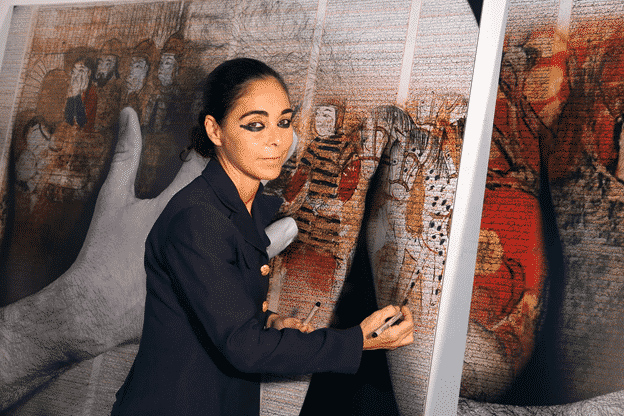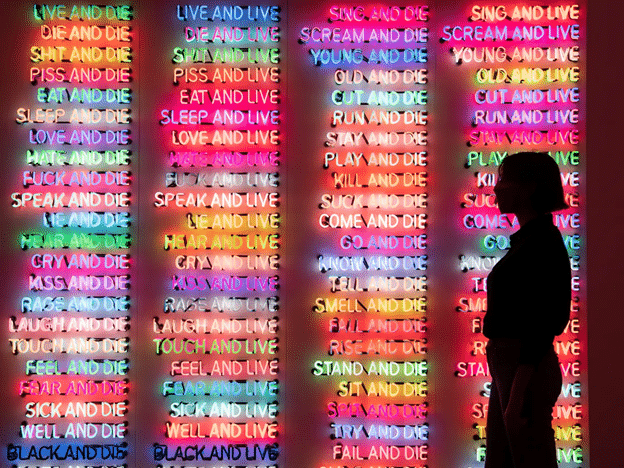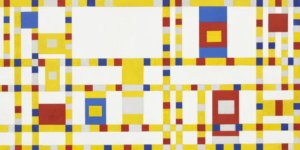For some artists, crafting a compelling artist statement comes as naturally as creating their works of art. For others, the very thought of writing about themselves and explaining their methods is enough to give them anxiety.
But before you dismiss writing your artist statement, consider your audience and the repercussions of not having one. Without a statement to briefly explain your work’s methods and intentions, audiences may take control of your narrative and misrepresent your mission. To grasp the value of an artist statement, you need to understand art and its purpose. In this guide, we will talk about why every visual artist should have an artist statement.

What is Art?
When we talk about art, what do we really mean? What is art and what is it not?
Art is defined as the application of creative skills to express the imagination or feelings in a visual form. It can be a product such as a painting or a sculpture or a deliberate activity like movement or performance that communicates an aesthetic purpose.
Because art is a visual tool for communicating concepts and emotions, artist statements become a vital aspect of being a visual artist since they capture the essence of your art and your intentions as a communicator. When done right, an artist’s statement will reveal your relationship with your art and may help your audience appreciate your goal and mission and even change the way people feel.
What is an Artist Statement?
When people get the opportunity to view your work, they may have some questions regarding your methods, medium, or subject matter. This is a good thing because it means that your art has piqued their interest. Because you may not always be around for artist’s interviews to reveal your process or intentions with a piece, an artist statement serves as your de-facto representative.
An artist’s statement is a general introduction of a specific project or your entire body of work. It is meant to enhance the viewer’s understanding. The length of the statement will depend on what it will be used for. If it is an artist statement that will appear next to the artwork in an art gallery or a press release, a shorter art statement composed of a few clear and concise sentences is ideal – two to three paragraphs, at most. If you are applying for a grant for funding or admission to a fine art program, you may need a longer artist statement to go into detail about your overall vision, medium and tools, influences, and techniques.
Your artist statement is not to be confused with an artist bio. It is not the place for you to tell your life story, talk about unrelated art history, or brag about your accomplishments. It shouldn’t be heavy with art jargon, use third-person language, or another verbiage that disconnects you with your audience. Your artist statement is for describing the current direction of your work, particularly your unique approaches and art-making methods. It is an opportunity to provide context to your work and describe your personal, art historical, and cultural influences.

The Importance of Writing an Artist Statement
If you’re asking yourself whether you should write an artist statement, then you’re probably one of the many artists that are uncomfortable about talking about themselves or find it too challenging to describe your process in words. You wonder just how essential an artist statement is for your career and future. You may even forego writing an artist statement to ensure your art speaks for itself in its visual form.
However, artist statements are necessary in the vast and competitive contemporary art world because of the power and insights they have to enlighten and educate readers. Encounter artist statements and discover that when written well, it may compel you to take another look at the artwork you may have dismissed too quickly. Artist statements are more than just an explanation of your visual art as a whole or specific subject matter; when done right, they can be influential statements that help decision-makers and increase viewer’s understanding of your concepts, processes, and objectives.
If your goal is for your visual art to reach more people, you may submit your portfolio to a gallery or art exhibition. And if you want to grow as a professional visual artist, you may apply for a graduate program at an art school. Whether you are entering a juried art competition, inviting art collecting organizations for a studio visit, submitting a grant proposal, or posting your art online on social media, you will need an artist statement that presents your visual art in a meaningful way. Educational institutions, art gallery owners, grant committees, event and program sponsors, and so on will read your statement to better understand your art so they can differentiate you and your work from others who are also vying for the same opportunities.
A powerful statement can help build your reputation as a visual artist in the art world and allow decision-makers to recognize your mission and potential. It can help you gain publicity and be used in press releases or by a curator or art gallerist to describe your work to potential patrons or museums. Think of artist statements as promotional tools that share stories and influences how others talk about your work.
When writing your artist statement, there are some professional practices to follow. If your writing skills are limited, don’t force yourself to be both an artist and a writer. Consider your audience. Avoid art jargon and highly technical language that may intimidate average readers. Write about art mediums and processes using active voice and inclusive language. To make your artist statement more inviting and personal tone, don’t write in the third person.
For artists who can’t find the right words to describe their methods and purpose, seek the help of a mentor or talented writer. To get started, write freely and naturally and have them read your statement and offer their critique on how you can improve it. It also helps to review your artist statement from time to time to ensure they are still relevant.

Conclusion
Writing an artist statement is one of the most important professional practices for artists and has been valued throughout art history. Your artist statement can work for you in more ways than one. They can be powerful statements that compel potential buyers, art dealers, galleries,curators, and the media outlets to request a studio visit to learn more about your art. From art news, art fairs, social media, press releases, and art resources, your artist statement can help you take control of your authentic narrative. When done right, an artist’s statement can make people feel invested in your subject matter deeper and overall mission closer.


![[Left] Kusama with her piece Dots Obsession, 2012, via AWARE, [Right] Yayoi Kusama (Courtesy Whitney Museum of American Art) | Source: thecollector.com](https://www.artdex.com/wp-content/uploads/2024/04/Left-Kusama-with-her-piece-Dots-Obsession-2012-via-AWARE-Right-Yayoi-Kusama-Courtesy-Whitney-Museum-of-American-Art-Source-thecollector.com--300x172.png)




